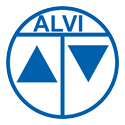Lack of quality or delivery bottlenecks due to production problems can have disastrous consequences for drug manufacturing. In order to improve product quality and manufacturing processes, process analysis and standardized controls have been developed by the pharmaceutical industry under the term process analysis technology (PAT).
Typical pharmaceutical industry application requirements
- The most common critical parameters of pharmaceutical processes are pH, oxygen and conductivity. Measurement deviations can have a large impact on the final production result. Manufacturing pharmaceutical products requires maximum accuracy for the acquisition of measured values.
- A crucial requirement in any pharmaceutical environment is the ability to track any changes in the process or measurement and to make sure that data cannot be manipulated.
- Especially for pharmaceutical applications, the ability to clean (CIP) and to sterilize in place (SIP) are of utmost importance, because all process-wetted system components must be cleaned and sterilized at regular intervals to ensure hygienic requirements.
Real-time monitoring for Knick Memosens sensors
Knick Memosens sensors are equipped with a chip that stores relevant quality parameters such as slope, zero point, reference impedance, glass impedance, response time, calibration timer and sensor wear. All data on the life cycle of a sensor is easily accessible. Because the calibration data of Memosens sensors is stored directly in the sensor head, Memosens technology significantly reduces and simplifies measuring loop maintenance.
Consistent QM documentation of the process
Memosens sensors can be pre-calibrated under ideal conditions in the laboratory. Connected to the sensor management tool: MemoSuite Advanced offers the option to automatically calibrate up to 10 sensors, following GMP standards. MemoSuite Advanced offers the option to automatically calibrate up to 10 sensors, following GMP standards. If after several calibrations the zero point or slope values lie outside your specified tolerances, this indicates that the sensor drift is inadmissibly high and the sensor should be replaced. The GMP calibration reports can also be automatically loaded into higher-level systems.
In addition, many of our analyzers provide an Audit Trail function: Every change in the menu of the analyzer is recorded, monitored and stored in a specially coded data memory for safety reasons. The data can be read out with a PC program that makes the logged data readable, but not manipulated. In addition, all sensor parameters are graphically displayed in a clear sensor network diagram.
For more info, contact us today at info@alvi.com.au or 02 9838 7220.


